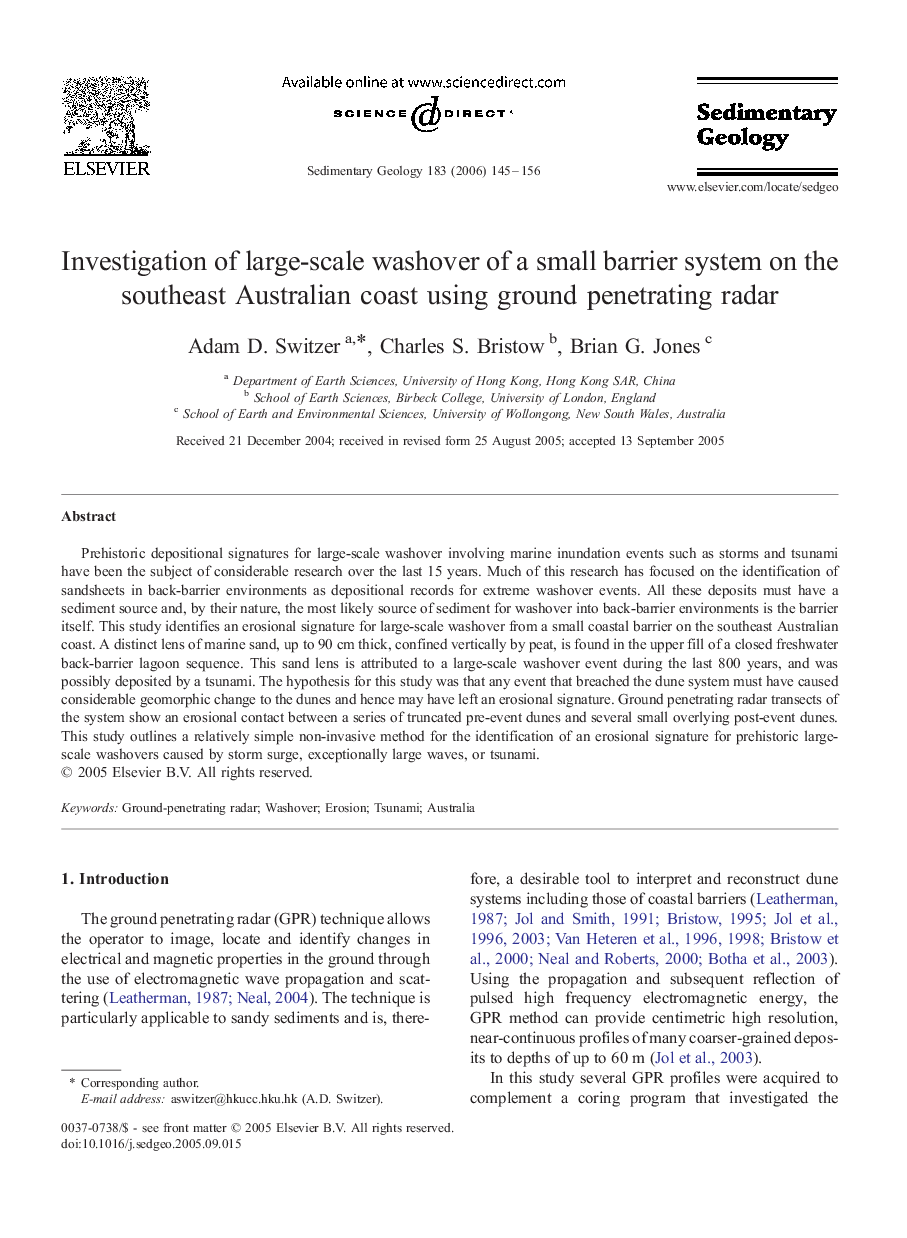| Article ID | Journal | Published Year | Pages | File Type |
|---|---|---|---|---|
| 4691139 | Sedimentary Geology | 2006 | 12 Pages |
Prehistoric depositional signatures for large-scale washover involving marine inundation events such as storms and tsunami have been the subject of considerable research over the last 15 years. Much of this research has focused on the identification of sandsheets in back-barrier environments as depositional records for extreme washover events. All these deposits must have a sediment source and, by their nature, the most likely source of sediment for washover into back-barrier environments is the barrier itself. This study identifies an erosional signature for large-scale washover from a small coastal barrier on the southeast Australian coast. A distinct lens of marine sand, up to 90 cm thick, confined vertically by peat, is found in the upper fill of a closed freshwater back-barrier lagoon sequence. This sand lens is attributed to a large-scale washover event during the last 800 years, and was possibly deposited by a tsunami. The hypothesis for this study was that any event that breached the dune system must have caused considerable geomorphic change to the dunes and hence may have left an erosional signature. Ground penetrating radar transects of the system show an erosional contact between a series of truncated pre-event dunes and several small overlying post-event dunes. This study outlines a relatively simple non-invasive method for the identification of an erosional signature for prehistoric large-scale washovers caused by storm surge, exceptionally large waves, or tsunami.
